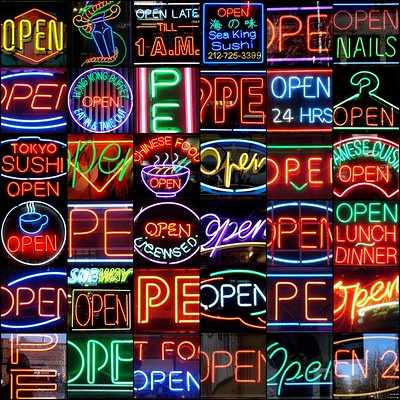
Understanding what is and isn’t an adaptation is crucial to using and sharing CC-licensed works appropriately, especially when you are combining many different works into one new work, as in the image at the right. When bringing different works together, what constitutes an adaptation or remix, and what constitutes a collection? Listen, and then check out the collection, images, and links below for more information.
A Collection of Open Images
There are millions of signs that say open in the world and thousands (at least!) of photographs of these signs, and though it may be a cliché to use such images in an open educational resource (OER), I like these images very much and intend to use them in the OER I create—such as this website. Here is a small collection of such images that I’ve used in the past year.

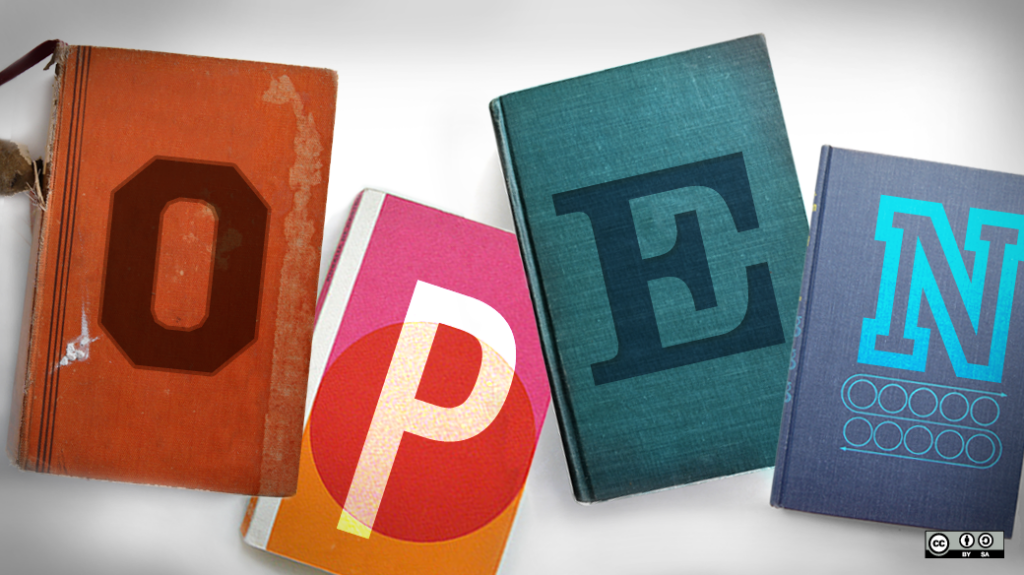
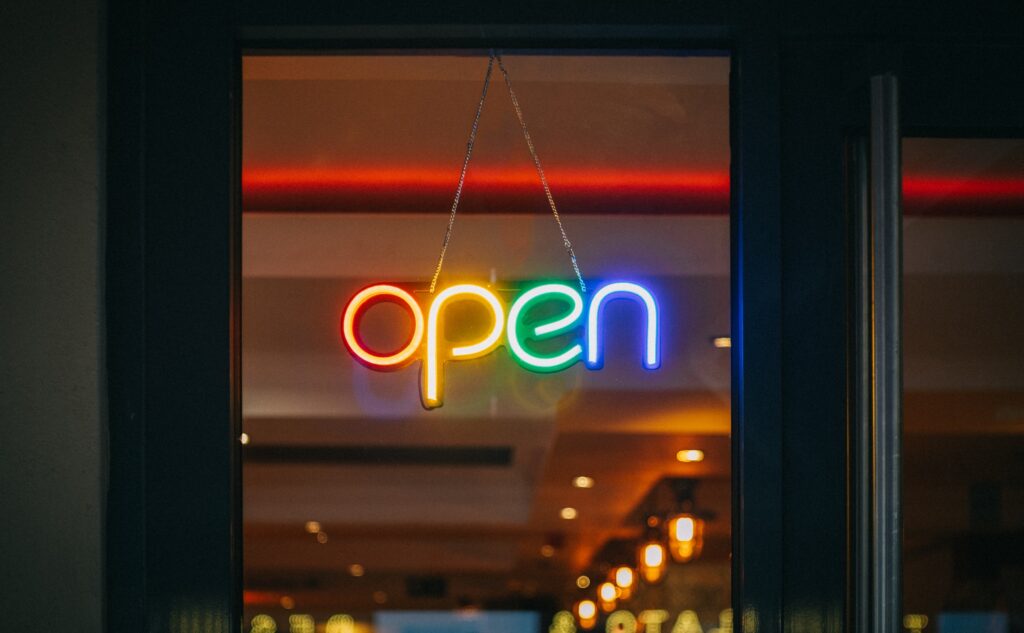

This collection is licensed under a Creative Commons Attribution-NonCommercial 4.0 International License.
When Making an Adaptation, What’s Compatible? What’s Not?? 
Fear not! These charts will help you out.
Let’s say you want to combine works with different licenses in a remix. This chart shows which licenses are compatible for that purpose. Find the license for one work in the left column and the license for another work in the top row. If there is a check mark in the cell where the corresponding column and row intersect, then you can use the licenses together. If there is an X in the cell where the corresponding column and row intersect, then you cannot use the licenses together.
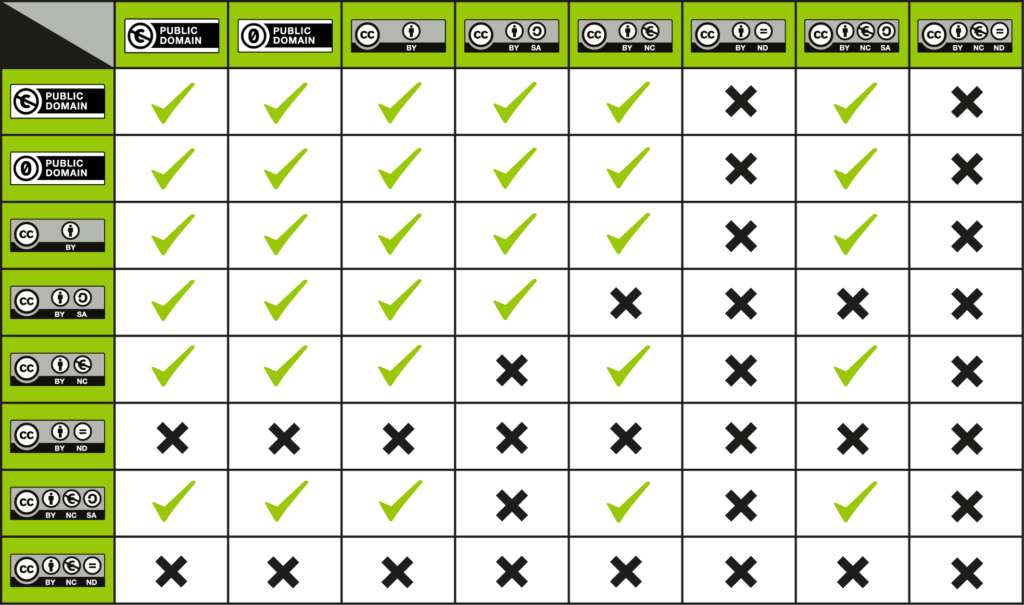
Now let’s say that you’ve created an adaptation. What license can you use for your contributions to the adaptation? Find the license for the original work in the left column and the license you want to use in the top row. If the cell where the corresponding column and row intersect is green, then you can use the license you chose. If the cell where the corresponding column and row intersect is yellow, then you can use the license you chose, but it is not recommended. If the cell where the corresponding column and row intersect is gray, then you need to choose a different license.
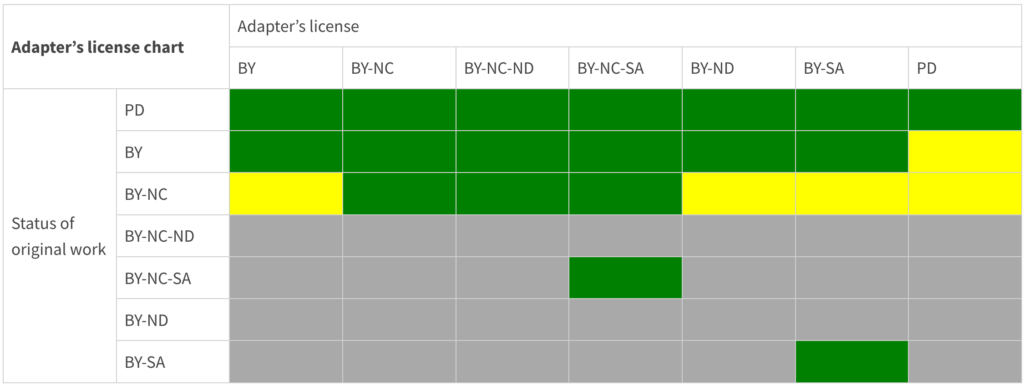
Attributions and References
In the podcast, I compare a remix to a smoothie. This analogy is Nate Angell’s; check out his blog post “Open Licensing Over TV Dinners and Smoothies.”
I also cite the Free Music Archive (FMA), a repository of openly licensed music. Much of the music is licensed CC BY-ND and CC BY-NC-ND, but many songs are licensed to be used freely in podcasts and videos. Check out FMA’s explanation of CC licenses, aimed specifically for those who want to reuse and remix CC-licensed music.
The information in this podcast is based on Unit 4: Using CC Licenses and CC-Licensed Works by Creative Commons, licensed CC BY 4.0.
The music is “Molly Molly” by Blue Dot Sessions, licensed CC BY-NC 4.0.
Post updated August 25, 2022.

